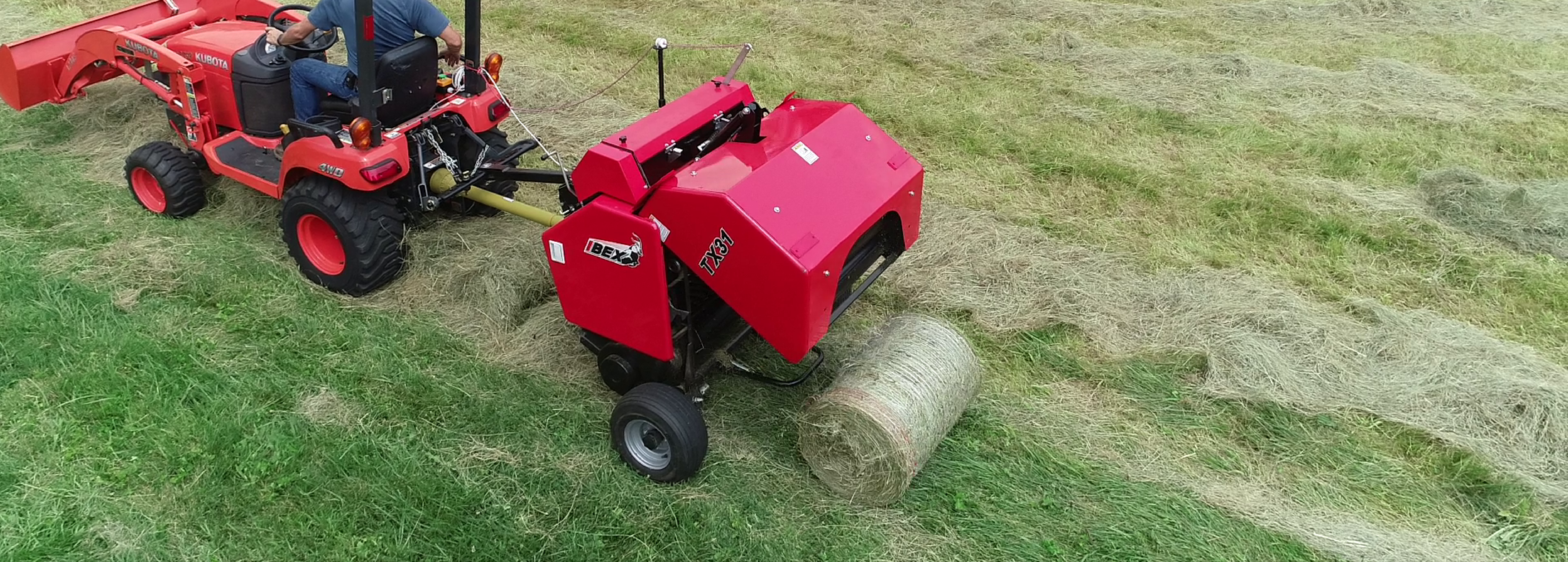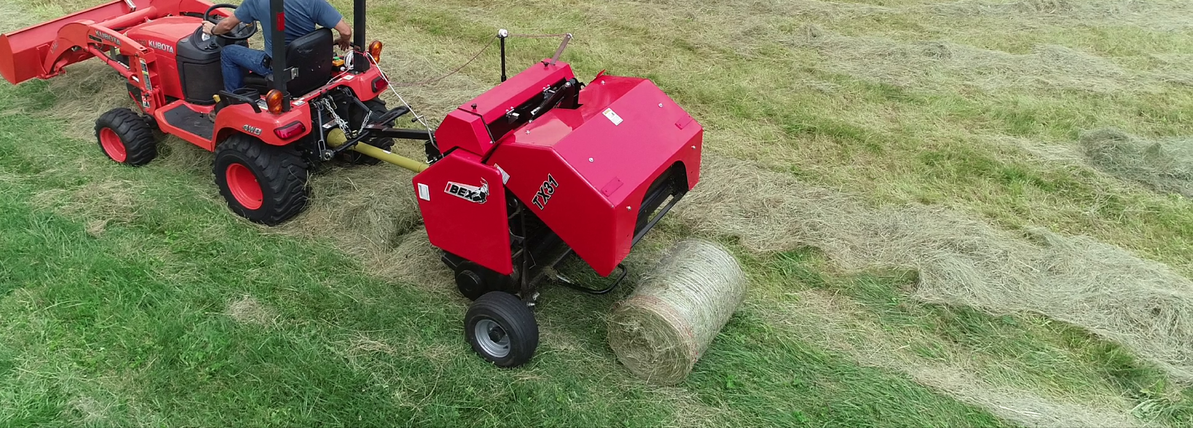Ready, Set, Mow: Preparing for the Hay Season

Perfect hay-baling conditions can be hard to come by, especially with the unpredictability of late spring weather. That’s why it’s crucial to start preparing for the hay season at least a month before your first cutting. In this blog, we’ll outline the steps to ensure your equipment, fields, and storage are prepared well before the first cutting.
Prepare Your Hay Baling Equipment
Ideally, much of the spring preparation should have been done the previous fall. If you followed advice from our earlier blogs, you’ve already cleaned and repaired your equipment before storing it for the winter. By now, you’ve hopefully made any necessary equipment purchases as well.
Since optimal conditions for the first cutting typically occur around May 15th in the southern US, and Memorial Day in the north, it’s time to start preparing by mid-April. It’s wise to purchase any parts and supplies ahead of time to avoid the late spring rush, which often leads to stock shortages. Some essential items to consider include baler twine or net, belts, mower blades, as well as rake, tedder, and baler tines. Ordering extras of these parts for both your equipment shed and tractor toolbox can be a lifesaver for quick field repairs.
It’s also essential to review your equipment’s owner’s manuals. This gives you a chance to assess any additional parts or supplies you might need, as well as refresh your memory on proper operating procedures.
Here are some key tasks to get your hay equipment ready:
- Check tire pressure.
- Adjust belt and chain tension.
- Lubricate moving parts (especially if you didn’t do this before winter).
- Replace dull or damaged mower blades.
- Set the pick-up height on your rake, tedder, and baler.
- Repair or replace any bent or damaged tines on your equipment.
- Inspect belts for cracks.
- Check baler hoses for leaks or cracks.
- Thread net wrap or twine, and inspect the mechanism.
Prepare Your Hay Fields
Once your equipment is ready, turn your attention to the fields. A quick walk-through will give you an idea of how your pastures are growing and help you time your first cutting. Most forages should be cut at the late boot stage, when seed heads begin to emerge. Keep an eye out for those, as they indicate it’s time to cut.
As you walk through your fields, remove any stones, trash, limbs, or other debris that might have accumulated over the winter. This is especially important along roadsides where debris may have blown in or near wooded areas where limbs and trees may have been felled by storms.
This is also a good time to inspect fences and gates. Check for any damage or areas that need repair, and make sure gates open, close, and latch properly. This may seem like a general maintenance task, but it’s crucial—no one wants to deal with a neighbor’s cows wandering through freshly windrowed hay!
Prepare Your Equipment Storage Sheds
The month before your first cutting is also a good time to clean and organize your equipment shed. Clear any clutter to ensure easy access to equipment. Gather hitches, lock pins, and tools, and store them in an easily accessible location. Also, organize your spare parts and supplies so you can quickly find them during an emergency.
Prepare Your Hay Storage Areas
Take some time to prepare your hay storage areas as well. Make room in the hay loft or shed for the upcoming season’s harvest. If you still have hay from the previous season, stack it separately to avoid mixing it with the new crop. Inspect your barn or shed for any leaks and make repairs as needed. If you plan to use a hay elevator for stacking, check to ensure it’s in working order.
Plan for Selling Your Hay
In the final weeks leading up to hay season, start thinking about your hay sales if you plan to sell. Begin by assessing your own livestock’s hay needs (you can use our “Livestock Winter Hay Needs” calculator to help). Once you’ve done that, contact past hay customers to see how much they’ll need. Reaching out early ensures you’ll have buyers lined up for your excess hay before it’s even baled.
Taking the time to prepare will pay off during the busy hay season. While it’s impossible to anticipate every challenge in hay production, these preparations will ensure you and your equipment are ready when your pastures are at their peak and the perfect stretch of late-spring weather arrives.
Once you have determined the parts and supplies you will need to prepare your hay equipment for the growing season, Tractor Tools Direct is here to help! Visit the following links to quickly place an order or find support:
- Parts
- Supplies
- Manuals
- Videos
- Maintenance
- Books
Prefer to speak to someone in-person? Give us a call at 260-BALE-HAY to speak to a member of our customer service department. We will be happy to assist! Happy Haying!
Recent Posts
-
How to Winterize Your Tractor: Essential Maintenance Tips to Protect Your Investment
Farm equipment is one of the most valuable investments a farmer can make. At Tractor Tools Direc …Dec 1st 2025 -
Farm Tax ID Explained: Benefits, Eligibility, and How to Apply
As the end of the financial year approaches, it's a great time for small farmer operators to rev …Nov 12th 2025 -
Rototillers vs. Power Harrows: Which Tool is Best for Your Soil?
Fall might seem like an odd time to talk about planting, but there really is no better time to t …Oct 27th 2025




